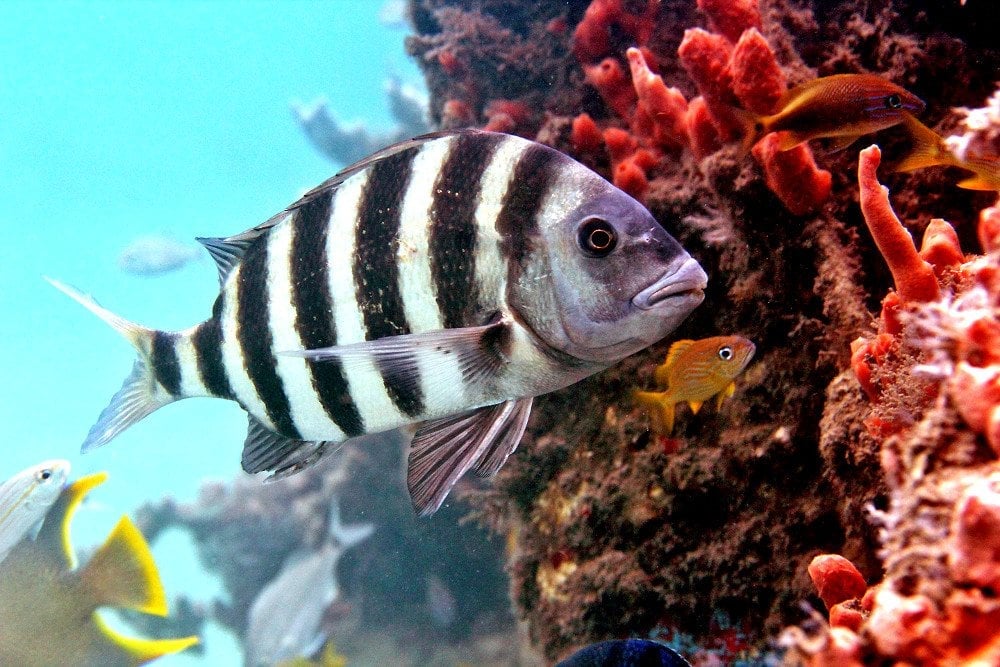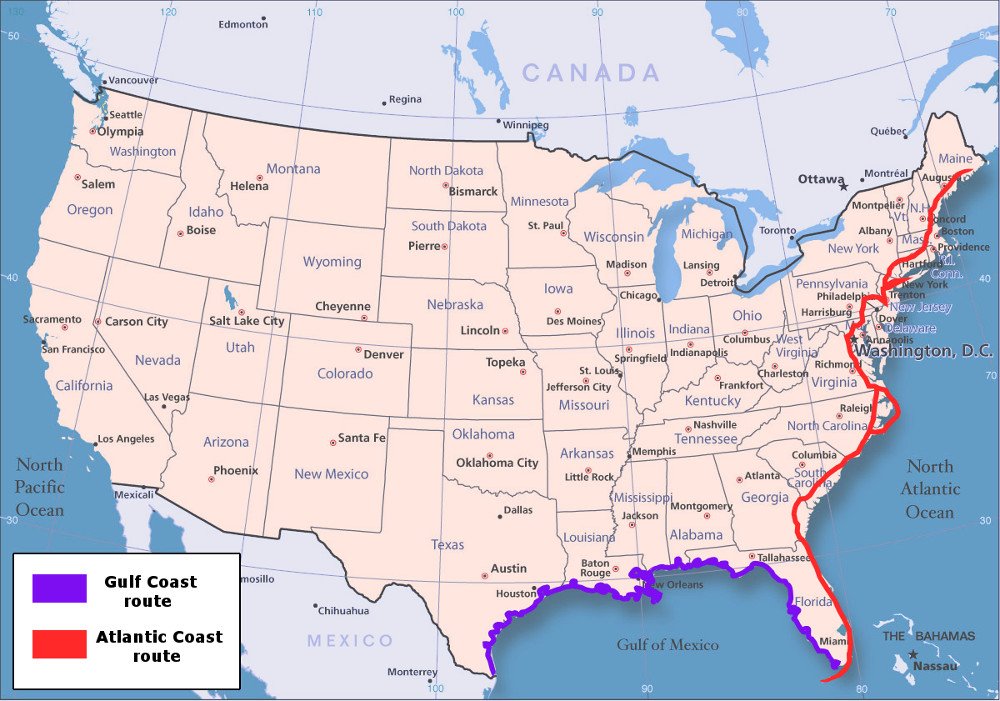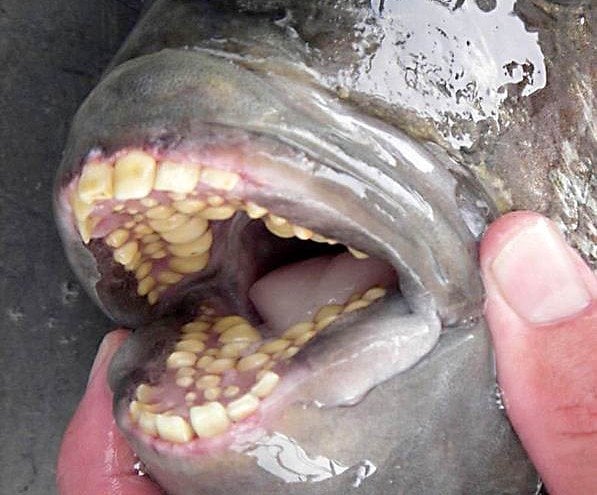The sheepshead fish is a deep-bodied, compressed marine fish with sharp dorsal spines. The fish commonly reaches 10 – 20 inches, but can grow to be as large as 35 inches! It has a hard mouth and stubby teeth that bear a striking resemblance to human teeth.
Sheepshead Fish Facts
The sheepshead fish is a deep-bodied flat fish that is commonly found in North and South America. It usually weighs around 21.2 lbs (9.6 kg) and reaches 91 cm (35.8 inches) in length.

The sheepshead (Photo Credit : Flickr)
Actually, the term ‘sheepshead’ may refer to a number of things, including a few other types of fish. However, in this article, we are only considering the species that is most commonly referred to as the sheepshead – Archosargus probatocephalus.
Archosargus probatocephalus are a euryhaline species, which means that they have been collected from waters where the salinity ranged from 0 – 35 parts per thousand (ppt). Parasites of sheepshead include nematodes, isopods, trematodes and ciliates, but infestations carried out by these parasites don’t endanger large populations of sheepshead.
The sheepshead has limited commercial value, but it’s particularly well-known for possessing teeth that look incredibly similar to ours (we’ll discuss this later).
Sheepshead anatomy
The back of the sheepshead is elevated behind its head, which, in turn, is sloping and deep in profile. The sheepshead has a short snout with a mouth nearly horizontal and inferior. Its scales are finely serrate and it has sharp dorsal spines. Its body color is usually green-yellow or gray in color, marked with 5-7 vertical black bars. It’s generally seen that the anal, ventral and dorsal fins are typically black or gray, while the pectoral and caudal fins have a more greenish hue.
Sheepshead fish habitat
Sheepshead fish can be found on the Gulf and the Atlantic coasts of the United States.

Gulf and the Atlantic coasts of the United States.(Photo Credit : Wikimedia Commons)
This fish is found from Cape Cod, Massachusetts south through Florida (the greatest concentration of the sheepshead fish is found here) and the Gulf of Mexico to Brazil. Note that the Sheepshead Bay section of New York City was named after the sheepshead fish, but the fish is now rarely found that far north.

Did you know that the Sheepshead Bay section of New York City was named after the sheepshead fish? (Photo Credit : Flickr)
Adult sheepshead fish are known to prefer habitats with some amount of topographic relief, and are generally spotted over oyster reefs, breakwaters, muddy shallows, wrecks, piers and in the Gulf of Mexico. Although the sheepshead is not a trule migratory fish, they tend to move to offshore spawning ground when the water temperature dips in late fall and winter.
Sheepshead fish teeth
One of the most striking characteristics of the sheepshead fish is its teeth, which are amazingly similar to human teeth.
Take a look at the picture below:

Pretty much like ours, right?(Photo Credit : Gcrl.usm)
As you can see, the anterior teeth of the sheepshead are incisor-like, while the posterior molars are set further back. Sharp and thick teeth begin to appear when a sheepshead fish is just 4.5 mm long, and when the fish grows to about 15 mm long, all the incisors appear. At the same time, its back teeth develop into adult molars.
Interestingly enough, no one really knows why the sheepshead fish has that name, but it’s been suggested that it’s because its teeth look like that of sheep.
As fascinating as it is to see a set of ‘human teeth’ on a fish, it’s a bit weird too, right?
Sheepshead fish food
The sheepshead fish feeds on clams, oysters and other bivalves, as well as barnacles, fiddler crabs and other crustaceans. When the fish has grown to 50 mm in length, their teeth are stronger and more sturdy, which helps them feed on more heavily armored prey, such as oysters, echinoderms and barnacles.